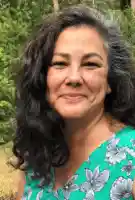Making Values Visible in Early Learning

Leading by Design: Making Values Visible
in Early Learning Spaces
Leadership in early learning programs shows up in many forms. Sometimes it is a conversation with a teacher, a family newsletter, or a staffing decision. Other times, it takes shape in the physical space itself. Classroom arrangement, materials selection, accessibility decisions, and the feel of shared areas all reflect the choices that shape your program each day.
Seeing the Space with Leadership Eyes
The environment speaks, even when no one is in the room. Step into each space with the eyes of a leader, looking not just for what’s there, but for what the space is supporting. Where do children gather and stay engaged? Where do transitions feel smooth or strained? Where do staff move with clarity, and where do they seem to work around the room instead of with it? These observations can uncover what your environment is making possible and where it may benefit from consideration or support.
Values show up in the environment through intentional choices. A cozy area for self-regulation might point to recent staff conversations about sensory needs. Open shelving and labeled bins placed at a child’s height support autonomy by allowing children to access and return materials independently. Wide, clear pathways, low handles, and adaptive seating reflect a commitment to inclusion for children and families with mobility or sensory needs. Documentation panels that show children mid-process (bonus when paired with their words and observations) affirm the value of learning as an active, evolving experience. Together these elements of intention shape how people feel in the space and what they understand about its values.
Daily Rhythms Reflect Our Program Priorities
The daily schedule has structure, just like the architecture of your building and each room arrangement. The way time is organized sends clear signals about what a program values, what feels possible, and how learning unfolds. In this sense, time functions as part of the learning environment.
Some programs build in long, uninterrupted play. Others move quickly through activities. Sometimes transitions take over the day, leaving less space for child-led exploration or adult collaboration. These patterns can offer important insight. Without slowing down to notice them, they may pass unnoticed in the flow of the day.
Observing the use of time can help surface important questions:
- • Are routines predictable and responsive?
- • Do educators have time to prepare, reflect, and reset?
- • Do children have time to enter deep play without being rushed?
- • Are family transitions supported in ways that feel calm, welcoming, and unhurried?
Leaders can support teams by reviewing daily rhythms together. In conversation, you may decide to try adjusting the order of activities, allowing more open time, or be more proactive in protecting planning blocks.
Equity Lives in the Environment
Building an inclusive environment is a continuous practice grounded in attention and shared care. It reflects the daily experiences of children, families, and educators. When we think about alignment, we are also thinking about equity. Does everyone in the space feel respected, reflected, and supported?
This begins with noticing. Who is visible in the books, photos, languages, and materials? Whose stories are affirmed through daily routines and interactions? Are children supported in ways that match their strengths and needs? Do families feel welcomed in both subtle and direct ways? Are educators given time, tools, and voice in shaping the space around them?
Equity also lives in how space is shared and maintained. Children need access to materials that are reachable and meaningful. Families benefit from environments that are easy to navigate and offer clear invitations to connect. Educators need workspaces that are functional, calm, and designed with respect for their roles.
Caring for What We Create
Designing a thoughtful environment takes planning. Sustaining it requires ongoing care. When classroom spaces stay organized, materials are respected, and displays reflect current learning, children and educators experience a sense of stability and trust. When parts of the environment feel neglected or disconnected from daily use, it may be time to check in. These shifts often point to a need for clarity, support, or adjustment. Noticing what is being maintained (and what is not) can help identify important questions about priorities, energy, and capacity.
In this way, caring for the environment becomes a shared practice. It invites reflection, builds ownership, and helps keep the space aligned with the values it was designed to hold. Educators can be invited to notice what is working well, what feels strained, and what needs attention. Families can also be invited to participate by sharing ideas or helping refresh documentation in shared areas. When everyone is part of caring for space, the environment becomes a living reflection of the community that shapes it.
What We Notice, What We Nurture, What We Build
Our environments reflect decisions, relationships, and culture. When leaders observe thoughtfully and respond with care, the impact reaches across classrooms and into the daily experience for children, families, and teachers.
In any season of the year, a moment of reflection can begin with what is already present. Your space reflects your collective values and what your leadership brings to light. It reflects your leadership: your choices, your priorities, and the culture you are shaping with your team. How is this already happening, and how can you make your values even more evident? A staff board that features teacher certifications, professional goals, or recent reflections can highlight the program’s investment in educator growth. Family welcome areas with current photos, home languages, and invitations to participate show that connection and belonging are shared priorities. When the pace allows, take time to look closely, listen to those who share the space, and name what feels ready for attention. The environment can help guide this process. It often reveals what is aligned, what needs care, and where your community, program, and leadership are ready to grow next.
Resources

Christine Murray is an Early Childhood Education Specialist with Becker’s Education Team.
As an educator, coach and leader, Christine is inspired by the curiosity, joy and wonder that children so generously model for us. She earned her M.A. in Innovative Early Childhood Education at the University of Colorado Denver and loves collaborating with and supporting others in the field. Grounded in relationships and guided by empathy, Christine is always learning, connecting and creating.
